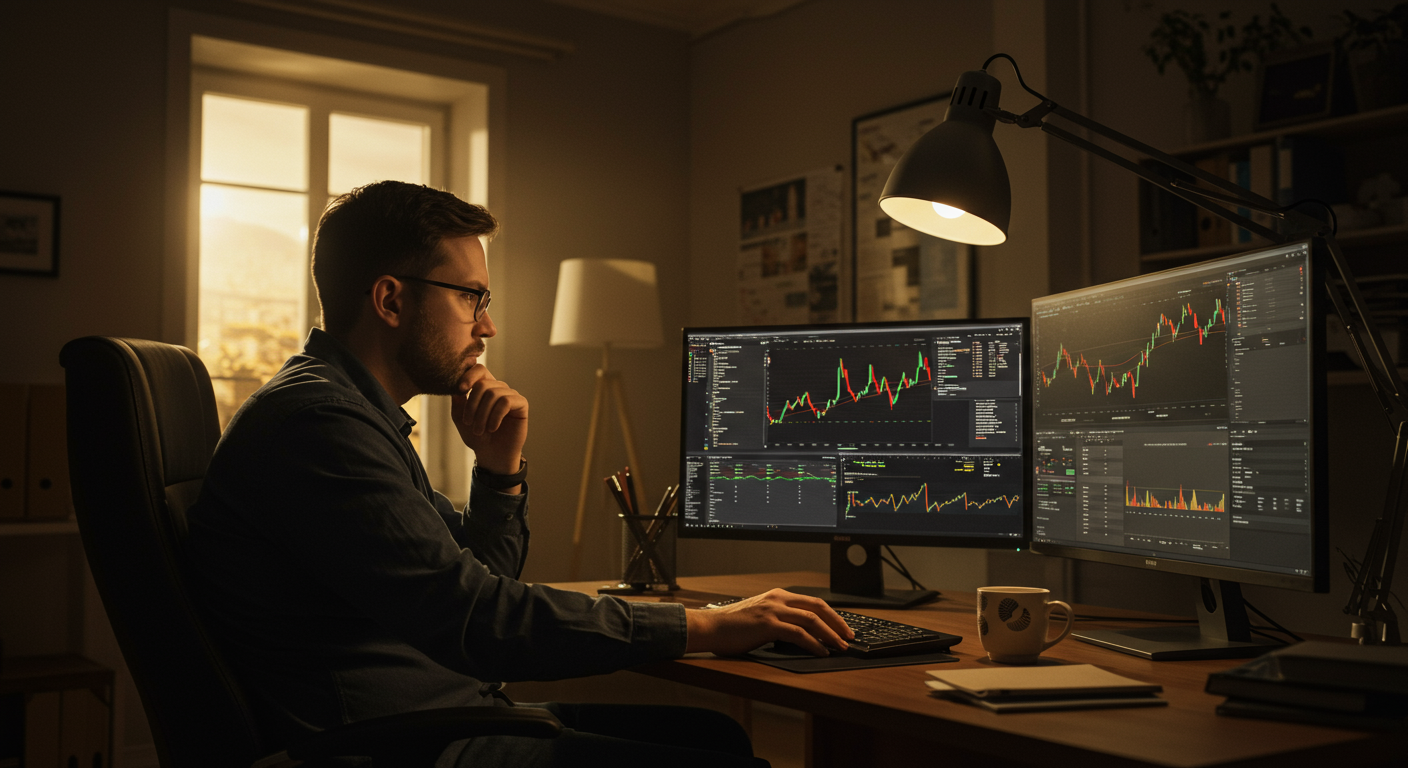Why This Story Got My Attention
So, I was browsing r/CryptoCurrency the other day, and I stumbled upon a post that really resonated with me. It was titled "How do you deal with selling too soon?" The user described buying XRP at $2.12 and selling at $3.25, netting a sweet 50% profit. Sounds like a win, right? But here's the kicker: XRP then jumped to $3.60, and the regret started kicking in.
I think almost every crypto trader has been in this exact situation. You sell, you're happy with your gains, and then BAM! The price moons, and you're left wondering what could have been. It's a tough feeling, and it can really mess with your head. The original poster (OP) even mentioned the pain of holding on too long during the December peak, which makes the urge to sell early even stronger. This story highlights a core challenge in crypto: balancing risk, reward, and emotional discipline. It's not just about the charts; it's about managing your own psychology.

Decoding the XRP Trade
Let's break down what happened in the Reddit post. The trader bought XRP at an average price of $2.12. This means they likely dollar-cost averaged (DCA'd) into the position, buying at different price points to arrive at that average. They then sold at $3.25, securing a 50% profit. That's a significant gain in a relatively short period, so initially, it seems like a smart move. The problem arose because XRP continued to climb after the sale, reaching $3.60. This triggered the feeling of "missing out" – the regret that they could have made even more if they had held on.
Now, it's easy to say in hindsight that they should have held, but that's not how trading works. The trader acted based on the information they had at the time and their personal risk tolerance. They mentioned a past mistake of holding on too long, which likely influenced their decision to sell earlier this time. This highlights the importance of having a trading plan and sticking to it, even when the market throws curveballs. The trader recognized that a 50% profit is nothing to scoff at, and they acknowledged the possibility that XRP could have just as easily gone down after they sold. It's a classic case of "profit is profit," but the human brain often focuses on what could have been, rather than what actually was.
What This Means for Your Trading Strategy
So, what can we learn from this XRP story? First, it underscores the need to define your profit targets before you enter a trade. This means knowing what percentage gain you're aiming for and having a plan to take profits when you reach that level. This helps to avoid emotional decision-making based on short-term price fluctuations. For example, the trader could have set a target of 40% and stuck to it, avoiding the regret of missing out on the extra 10%.
Second, it's important to accept that you'll never perfectly time the market. There will always be trades where you sell too early or too late. The key is to focus on the overall profitability of your trading strategy, not on individual trades. If you're consistently making profits over the long term, a few missed opportunities are just part of the game. Third, consider using stop-loss orders to protect your profits and limit your losses. A trailing stop-loss, for example, automatically adjusts as the price rises, locking in gains while still allowing you to participate in potential upside. This can be a useful tool for managing risk and avoiding the temptation to hold on too long. In this case, a trailing stop-loss could have allowed the trader to capture more of the upside while still protecting their initial profit.
The Stuff Nobody Wants to Talk About: The Risk of Greed
Let's be real – greed plays a massive role in crypto trading. It's easy to get caught up in the hype and believe that prices will only go up forever. This is especially true during bull markets when everyone seems to be making money. However, greed can lead to poor decision-making, such as holding on to losing positions or chasing pumps. It's essential to recognize when greed is influencing your trading and to take steps to mitigate its effects. One way to do this is to practice mindfulness and to regularly review your trading plan. Ask yourself if your decisions are based on logic and analysis, or on fear of missing out (FOMO).
Another risk that nobody likes to talk about is the potential for scams and rug pulls. The crypto space is rife with projects that promise massive returns but ultimately turn out to be fraudulent. It's crucial to do your own research (DYOR) before investing in any project and to be wary of anything that seems too good to be true. Diversifying your portfolio can also help to reduce your risk exposure. Don't put all your eggs in one basket, and be prepared to lose a portion of your investments. Finally, remember that crypto is a volatile asset class, and prices can fluctuate dramatically in short periods. Never invest more than you can afford to lose, and be prepared for the possibility of significant losses.
Trading Crypto Internationally: A Different Game
If you're trading crypto from outside the US, there are some additional factors to consider. First, regulations vary widely from country to country. Some countries have embraced crypto and have clear regulatory frameworks, while others are more cautious or even hostile. It's essential to understand the laws and regulations in your jurisdiction before engaging in crypto trading. This includes knowing whether you need to report your crypto gains for tax purposes and whether there are any restrictions on the types of crypto assets you can trade.
Second, currency exchange rates can impact your profitability. If you're trading in a currency other than USD, you'll need to factor in the exchange rate when calculating your profits and losses. Exchange rates can fluctuate significantly, especially in emerging markets, which can add another layer of complexity to your trading. Third, access to exchanges and trading platforms may be limited in some countries. Some exchanges may not be available in your jurisdiction due to regulatory restrictions or other factors. It's important to find a reputable exchange that caters to your needs and is compliant with local regulations. Finally, be aware of potential scams and fraud that may be targeted specifically at international traders. Always use strong passwords and enable two-factor authentication to protect your accounts.

Actually Putting This Stuff Into Practice
Okay, so how do you actually apply these principles to your trading? First, create a written trading plan. This should include your profit targets, stop-loss levels, and risk management rules. Be specific and realistic. Don't just say "I want to make a lot of money." Instead, set concrete goals, such as "I want to achieve a 20% profit on my crypto portfolio within the next year." Second, track your trades meticulously. This will help you identify patterns in your trading and to learn from your mistakes. Keep a record of your entry and exit prices, the reasons for your trades, and your overall profitability.
Third, use trading tools and resources to help you make informed decisions. This includes charting software, technical analysis indicators, and news aggregators. However, be careful not to rely too heavily on these tools. They should be used as aids to your own analysis, not as replacements for it. Fourth, practice emotional discipline. This is perhaps the most challenging aspect of trading, but it's also the most important. Learn to control your emotions and to avoid making impulsive decisions based on fear or greed. Meditate, exercise, or find other ways to manage your stress levels. Finally, be patient and persistent. Crypto trading is not a get-rich-quick scheme. It takes time, effort, and dedication to become a successful trader. Don't get discouraged by setbacks. Learn from your mistakes and keep moving forward.
My Take on Dealing with Trading Regret
Here's my honest take on the XRP trader's situation: They did nothing wrong. Seriously. Taking a 50% profit is a win, plain and simple. The fact that XRP went up further afterward doesn't negate that success. It's impossible to predict the future, and trying to do so will only lead to frustration and missed opportunities. The key is to focus on making consistent profits over the long term, not on trying to time the market perfectly.
I've been trading crypto for years, and I've made my fair share of mistakes. I've sold too early, I've held on too long, and I've even fallen victim to a few scams. But I've also learned a lot along the way. The most important lesson I've learned is that emotional discipline is the key to success. You have to be able to control your emotions and to stick to your trading plan, even when the market is volatile. So, if you're feeling regret about selling too early, take a deep breath, remind yourself that you made a profit, and move on to the next trade. Don't dwell on what could have been. Focus on what you can control and on making smart, informed decisions.